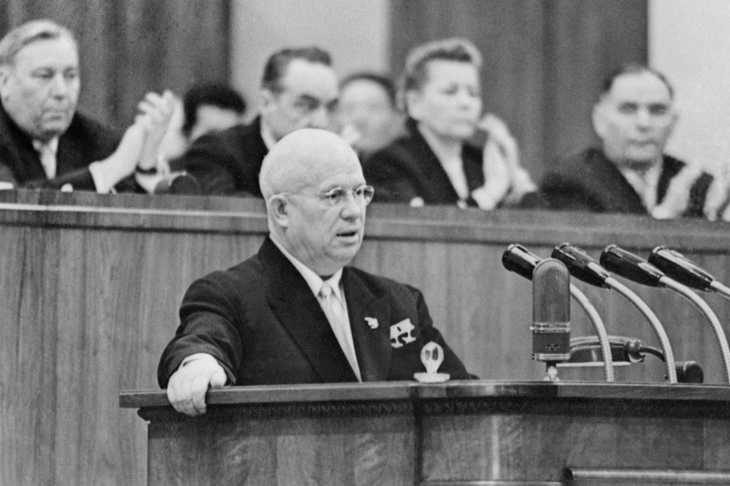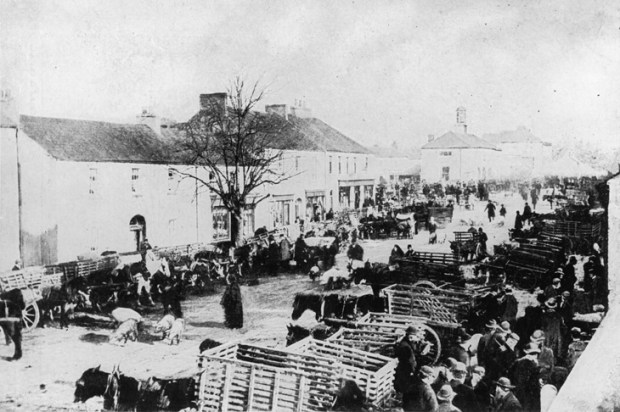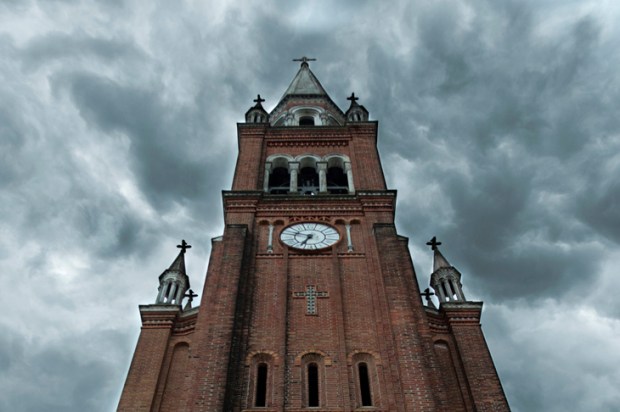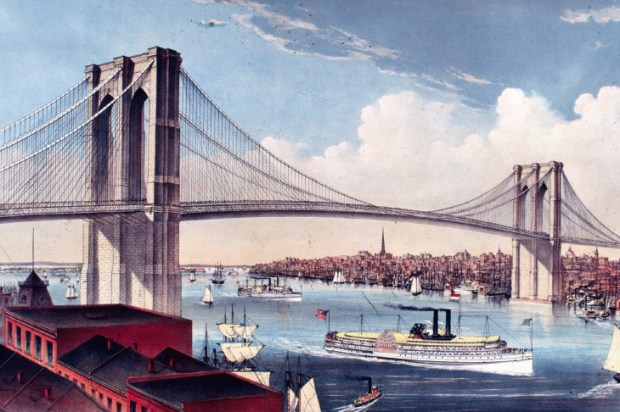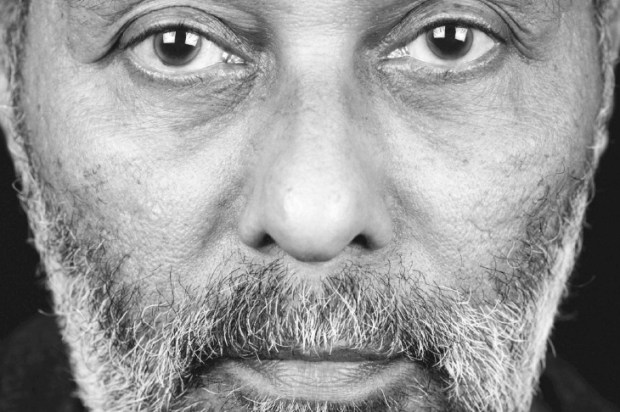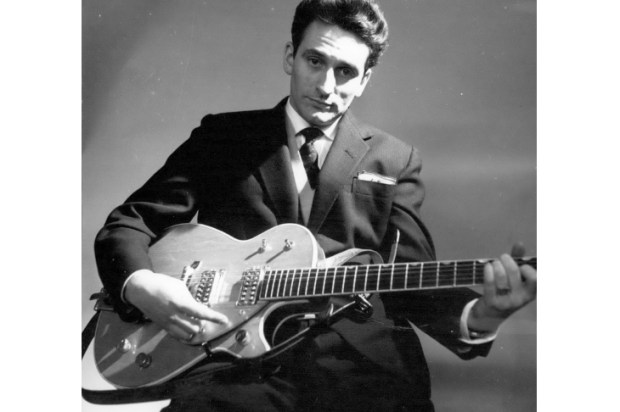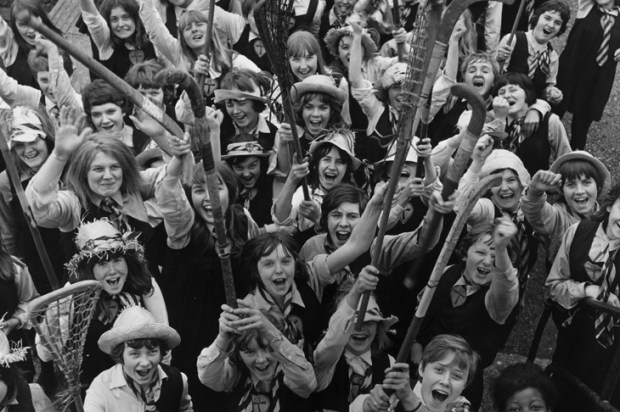The Twentieth Congress of the Communist Party in February 1956 passed off entirely without incident. Speeches on the next five-year plan were applauded and Stalin’s pet agronomist Lysenko made his customary appearance to denounce bourgeois genetics. A visiting communist from Trieste, Vittorio Vidali, noted his envy of two Uzbek party members who sat reading short stories throughout the proceedings. By late on Friday, the Congress was over, except for the announcement of one additional closed session the following morning.
How many delegates skipped this dreary-sounding extra session? Any that did missed the single pivotal moment in the history of the Soviet Union. Without preamble, Nikita Khrushchev stood up and delivered a report ‘On the Cult of Personality and its Consequences’. For over four hours he spoke to the hushed hall of the ‘exceedingly serious and grave perversions of Party principles, of party democracy and revolutionary legality’ that had occurred during the latter part of Stalin’s reign. He was speaking out, but secretly — a confusing message that aimed to launch a programme of strictly controlled reform to invigorate the Party and, most importantly, to absolve the Party leadership of complicity in Stalin’s and Beria’s crimes.
Yet, as Kathleen E. Smith points out, 1956 could be used as a case study for ‘how dictatorships stumble into reform and cope with ambiguity of their own making … and the obstacles to controlled liberalisation’. Once delivered, Khrushchev’s revelations took on their own momentum. They set in motion a pendulum of reform and reaction that swung back and forth through the Brezhnev years and beyond. Intermittently hesitant and high-handed, the Party’s approach had the effect of emboldening both sides of the debate, which would culminate in Yeltsin’s appearance on a tank outside the Duma in 1991 and the collapse of the entire Soviet system.
In this fluent and engaging account, Smith describes the unfolding events of 1956 — the early bewilderment, as details of the speech filtered out to Party members and society at large, press responses as they began to explore ‘acceptable’ criticism, and the exhilaration of the younger generation at the new atmosphere. As Khrushchev rolled out his plans for reform, the Party repeatedly came into conflict with writers, scientists and students who overstepped the hazy official line. When dissent erupted in Poland and Hungary in the autumn, the Party panicked and clamped down. The year that had begun with the secret speech ended with a secret letter circulated to Party members, demanding increased vigilance against the ‘unhealthy moods’ inspired by the ‘worsening of the international situation’. The pendulum had swung away from trust and towards suspicion, although there were to be several more passes before Khrushchev was removed in 1964.
For all its initial promise, how much did this first, timid glasnost of 1956 achieve? The year saw the release and rehabilitation of vast numbers of people after Khrushchev openly admitted that accusations against them had been fabricated. Now, as Anna Akhmatova famously remarked, ‘the prisoners will return and the two Russias will look each other in the eyes; the one that imprisoned, and the one that was imprisoned’.
The exhausted returnees hoped to pick up the threads of their careers and relationships where they had been dropped years before; but of course in many cases the experiences of the intervening years were inescapable. It depended on individuals’ flexibility and their appetite for adaptation. The great chronicler of the Gulag, Varlam Shalamov, had no patience with his wife’s conformism, nor his daughter’s conventional attitudes. Even his relationship with Pasternak, whom he had idealised, foundered when he saw at first hand the poet’s selfish domestic arrangements. Compromise was not a part of Shalamov’s character, and one wonders how typical this was of older ex-prisoners.
For the young, however, the freedoms of 1956 were formative. Smith describes the ways they immediately began to test the boundaries of the new glasnost by protesting against conditions in the universities, for example. This most touching of youth movements was one of the great achievements of the Soviet Union. Too young to be compromised by the purges, members of the Thaw generation were brought up on Soviet ideals of social justice, altruism and honest labour. Their own children would consider them hopelessly idealistic. Yet they became more and more influential as the years went by: Gorbachev, among many others, counted himself as ‘a child of the Twentieth Party Congress’.
For all his vacillations, compromises and many flaws, Khrushchev’s courage comes through clearly in this account. Ever curious, he urged the Party to open up to the world. And although the Hungarian protesters were viciously crushed and dissenters were imprisoned, Stalin’s paranoid blood-lust, thank God, was never repeated. No doubt this was precisely what terrified Stalin for all those years: the thought that inside the murky soul of one or other of his henchmen lay a tiny, hidden spark of humanity. It’s fitting that it was the buffoon, Nikita Khrushchev, who overturned his master’s legacy. Dictators always seem to underestimate people who are willing to look ridiculous.
Got something to add? Join the discussion and comment below.
Get 10 issues for just $10
Subscribe to The Spectator Australia today for the next 10 magazine issues, plus full online access, for just $10.
You might disagree with half of it, but you’ll enjoy reading all of it. Try your first month for free, then just $2 a week for the remainder of your first year.

